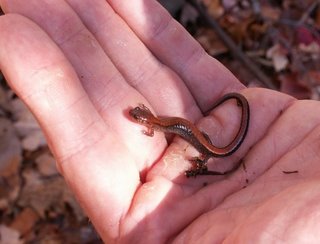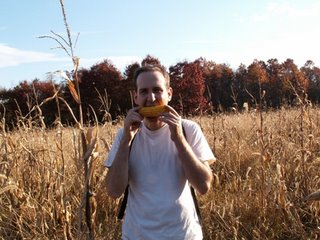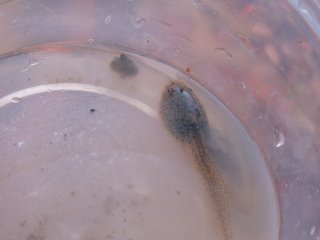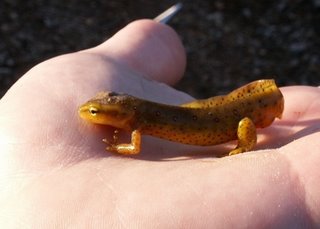Why Centralia? At first Scott was attracted by the idea of an abandoned town and all the abandoned structures and piles of trash that implied. I immediately thought of the strange temperature dynamics of an area of land heated by below rather than from above (by the sun).
Centralia was a very typical small coal mining town in Central PA (southern Columbia Country) up until the 1960s, when a trash fire in the town dump ignited a coal seam. The underground coal fire has burned every since. It undermined the main road running through town (Rt. 61) with smoking cracks in the asphalt, it caused hot, stinking sink holes in backyards, and it filled houses with carbon monoxide.
A few years ago the state and federal governments got together to buy out the remaining residents and condemn the town for safety reasons, although a few people still live there, and the postal service recently revoked the town’s zip code.
I had fantasies of blocks of collapsing houses and debris everywhere, surrounded by forest, and seething with cold-blooded creatures who could stay active longer into the winter because of the extra heat. Maybe they’d avoid the actively smoking cracks in the earth.
When we (Scott, Josh, and I) got there, though, we found an oddly neat abandoned town. There were a few well-maintained houses sitting by themselves, two very well-maintained cemeteries, and a few-blocks’ worth of very sterile-looking sinkholes (that were actually crawling with crickets). There really were smoking holes in the ground, which was kind of cool, but nothing about them suggested herp habitat.

Whoever’s been cleaning up in Centralia has done an excellent job of clearing away debris as the houses have come down, and we only found a few trash piles to look through, yielding only a few redbacked salamanders (Plethodon cinereus).

So, after lunch in a diner-type restaurant in the neighboring town of Ashland, we headed to Blue Mountain to see if we couldn’t stumble on any rattlesnake (Crotalus horridus) dens.
The sky was blue and the temperature was in the low 60s, making for wonderful hiking as we scrambled over boulder fields and rocky outcroppings. We found absolutely no snakes, in spite of our heavy hiking, however.
When it was time to head home, we cut up to a dirt run running through the state game land. We had some fun in a feed plot, where game managers plant corn to boost deer and other game populations. These can also indirectly boost populations of large snakes, since rodents also love corn, and lots of snakes love rodents. Josh and I tried the corn, but it was a little dry.


We did hit a little luck in a puddle next to the road. We were shocked to find tadpoles still in the water. How they’ll survive the winter in an exposed puddle on top of a ridge, we have no idea. We also found some newts in the puddle, but they’re a lot more mobile than the tadpoles.


I don’t think we’ll return to Centralia, but I had a great time, which once again steers me away from the Pine Barrens. I had a fabulous time hiking, and I was impressed by the prospect of driving around backroads in rural, economically-depressed Pennsylvania, flipping trash, and hiking in beautifully hilly countryside.
Totals:
4 redback salamanders
4 red-spotted newts
20+ mystery tadpoles
2 mystery frogs
No comments:
Post a Comment